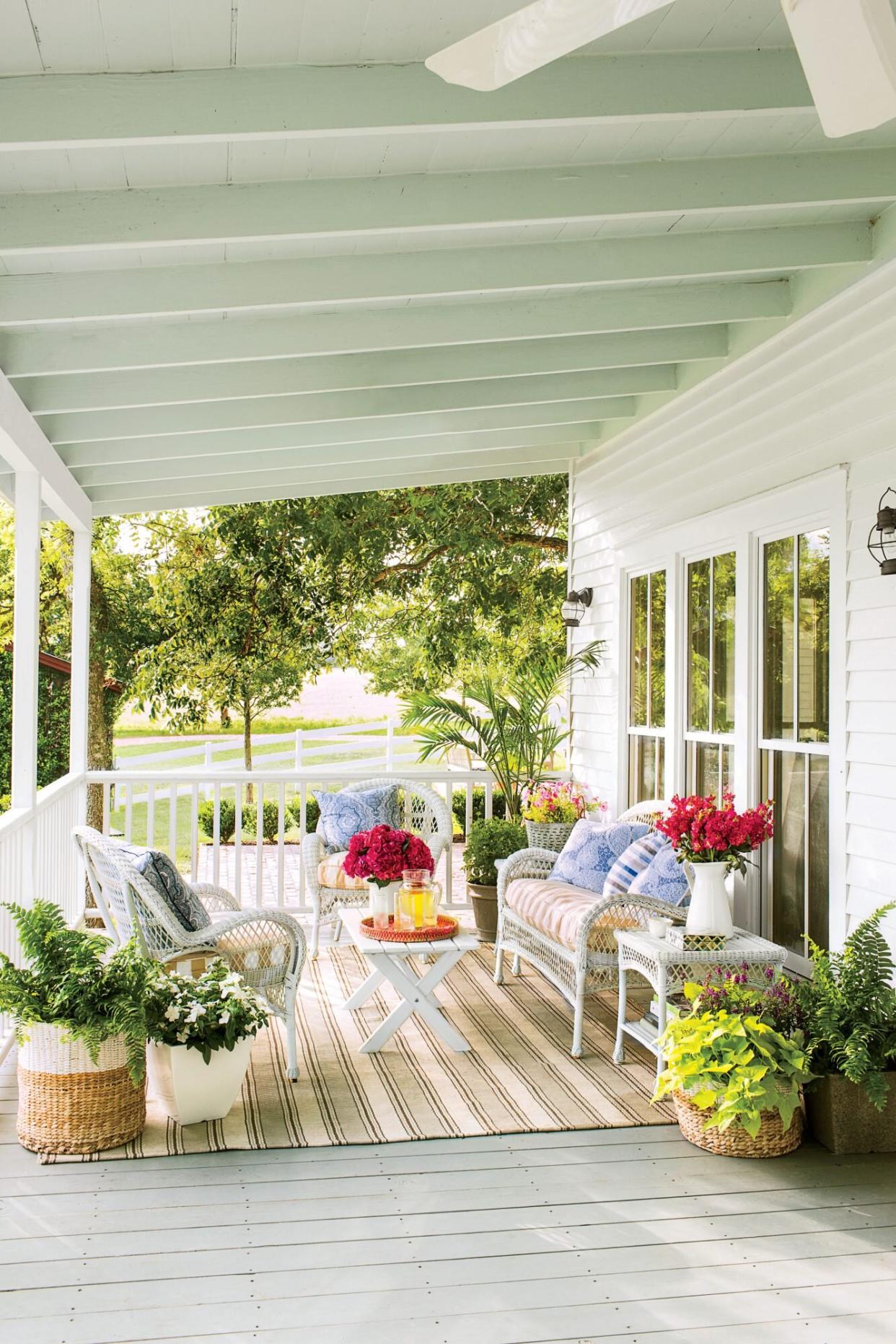It's Porch-Fern Season—Here's How to Make Yours the Greenest on the Block

Laurey W. Glenn
At the first signs of warmer weather, Southerners pour into garden centers ready to liven up their yards and porches for the season. The first item on the list? Ferns—and lots of them. When it comes to the best fern variety for porches, Pam Clark of Birmingham-based Leaf & Petal says it's hard to go wrong, assuring "almost any fern that you can put in the ground, you can put in a pot." While the most common varieties you'll see around the neighborhood are typically green, there are a lot of options out there that go beyond the froggy-hued varieties. Daniel D. Jones, a long-time volunteer in the Birmingham Botanical Gardens' nationally recognized Fern Glade says, "Although one usually thinks of ferns as only being green plants, there is a surprisingly wide array of color variations, especially of the newly emerging leaves (fronds)." Autumn fern (Dryopteris erythrosora) and painted fern (Athyrium niponicum) both deliver hues that can range from golden red to dramatic burgundy. That being said, the fern that you're most likely to find speckling porches across our area come April through August is the hardy and boldly green Boston fern.
To give us all the details on how to ensure your porch fern (regardless of species) solidifies its spot as the envy of the neighborhood, Clark and Jones share their best care tips, starting with species selection.
Choose the Right Variety
The first step in porch-fern success is selecting the right species for the surroundings. As Jones points out, all ferns need light to grow, but most prefer to take theirs indirectly. The trick is to find the ideal light exposure conditions for your particular variety. Clark suggests observing the area where your fern will live prior to purchasing. That way you'll be very familiar with your shade and sun levels, which direction you're facing, and other elements that can help you and your garden center expert determine the right fern for you. It's the secret to success from the get-go.
Repot into a Larger Container
Though not always necessary, repotting ferns from their store containers into a larger vessel is often a good idea as the original pot can sometimes be too small to encourage growing needs. "If repotting, the pot should have drainage holes and a quality potting mix," Jones says. He suggests using a mix of perlite-amended peat moss and, prior to planting, gently teasing apart the rhizomes and roots of the plant if it's compacted from the original container.
Create a Watering Routine
Consistency is key when it comes to your porch ferns. Clark suggests checking the soil moisture levels on a daily basis at the start so that you can understand how often your fern needs to be watered. "You have to mimic or create similar conditions to their natural environment," says Clark. "In the ground they have ground moisture so they can reach and find water when they need it. In pots they're more likely to get dried out at a faster rate." Once you determine the rate at which your fern will need to be watered, it's all about creating a schedule and sticking to it. A drip irrigation system with a timer is a good option (particularly if you'll be traveling) but setting a calendar reminder on your phone is just as effective as long as you don't mind doing things manually.
Fertilize When Necessary
Placing your fern in a container adds an easy pop of color to the porch, but it's not completely maintenance free outside of the watering routine. According to Clark, you should also be fertilizing the plant regularly. "As you water plants in a container you end up washing out a lot of the nutrients so fertilizing will help replace what's lost." Depending on your fertilizer, potting soil, container drainage, environment, and more, plan on fertilizing every four to six weeks to help maintain optimum health.
Keep an Eye on the Foliage
Take an extra close gander at your fronds regularly to ensure your fern is in good shape. Clark says that ferns aren't typically plagued with pests but, when kept on the porch, maidenhair ferns (Adiantum aethiopicum) can be finicky creatures. As for the Kimberley queen fern (Nephrolepis obliterata), Clark assures there's not a lot that can go wrong, though if you start to see fronds die off or turn black, root rot may be a concern. On the other hand, if your leaves start to take on a dusty or pale complexion, it could be an indicator of excessive sun exposure. "A leaf over exposed to a high light intensity will typically fade from bright green to dull green to a milky white and eventually become brown or black if the leaf tissue dies," says Jones. If all else fails, Clark advises just sticking with the Kimberley queen: "[They] are so hardy, there's not a lot that can go wrong."

